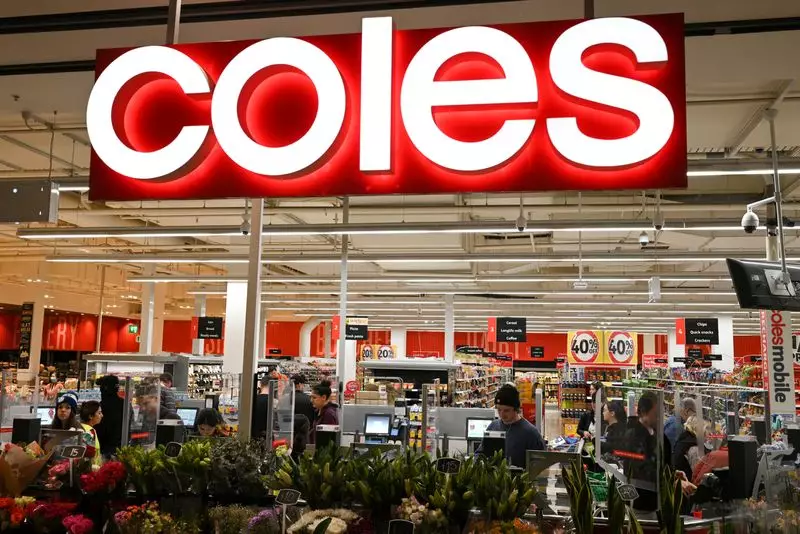Australia’s grocery landscape is currently under intense scrutiny as consumers feel the pinch from a rising cost of living. Coles, one of the country’s leading supermarket chains, reported a noticeable slowdown in its comparable sales during the first quarter, dropping from 3.6% to 2.4%. This decline is seen as a direct response to the pressure Coles faces to reduce shelf prices, a trend exacerbated by competition from its larger rival, Woolworths. While Coles posted a slight increase in overall sales revenue, the emphasis on maintaining lower prices indicates the difficulties in balancing profitability with consumer demands.
Coles’ sales revenue for the quarter reached A$10.55 billion, surpassing market expectations, which forecasted A$10.51 billion. Despite this positive outcome, the company faces challenges related to customer perceptions. Leah Weckert, CEO of Coles Group, acknowledged the ongoing struggle customers face with the cost of living. In light of this, Coles is intensifying its efforts to present value through specials, discounts, and loyalty programs like Flybuys. As consumers prioritize affordability, the importance of strategic marketing and competitive pricing cannot be understated; Coles must continue innovating in promotional practices to retain customer loyalty.
Recent reports suggest that while Coles shows a resilient front in the face of market turbulence, its performance aligns closely with Woolworths, which similarly indicated weaker-than-expected sales outcomes. Analysts at Jefferies noted that Coles’ management comments reflected a much more optimistic outlook than that of Woolworths, which recently raised alarms regarding margin pressures. This contrast in sentiment may influence investor confidence, as Coles attempts to distinguish itself in a sector characterized by economic constraints and consumer skepticism.
On a strategic front, Coles is aiming to bolster its operational efficiency. The announcement regarding the construction of its third automated distribution center in Truganina demonstrates the retailer’s commitment to improving logistics and reducing costs. This initiative is anticipated to provide substantial savings, amounting to A$105 million in the current fiscal year, underscoring the importance of operational scalability in this fiercely competitive market.
As both Coles and Woolworths navigate these turbulent economic waters, the focus on providing value to customers will remain paramount. The ongoing trials, including those pertaining to allegations of misleading marketing practices, pose potential reputational risks that Coles must manage carefully. Ultimately, staying ahead of consumer trends and maintaining a robust operational framework will be crucial for Coles as it adapts to the ever-evolving grocery business landscape in Australia. The future success of Coles hinges not only on immediate sales strategies but also on long-term investments in operational efficiencies and customer engagement models that resonate with today’s discerning consumers.

